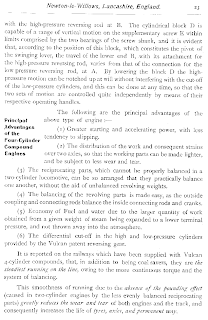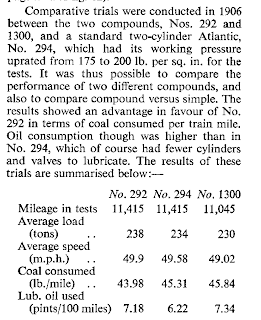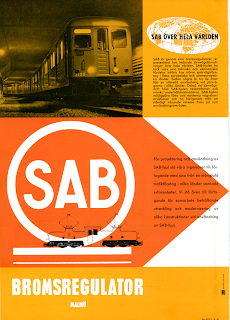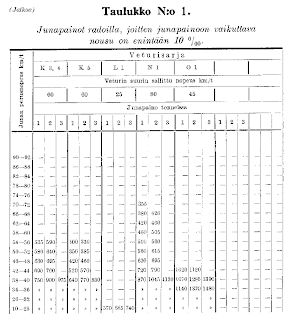The excellent "Locomotives of the L.N.E.R.", Part 3A, (pub. 1979) from the Railway Correspondence and Travel Society gives a less flattering image of the GNR 1300, as some extracts illustrate. This locomotive was rebuilt into a 2-cyl simple in 1917 and was withdrawn in 1924.
2013-10-18
GNR 1300
Voulcan Foundry brochure from c1910 has a 6-page introduction to VF balanced compounds giving a positive view of their single 4-cyl compound 4-4-2 built to GNR (No. 1300, built in 1905). The illustrated section shows among others balanced compound delivered to BAGS (Buenos Aires Great Southern, 4-6-0) and the GNR 1300.
The excellent "Locomotives of the L.N.E.R.", Part 3A, (pub. 1979) from the Railway Correspondence and Travel Society gives a less flattering image of the GNR 1300, as some extracts illustrate. This locomotive was rebuilt into a 2-cyl simple in 1917 and was withdrawn in 1924.
The excellent "Locomotives of the L.N.E.R.", Part 3A, (pub. 1979) from the Railway Correspondence and Travel Society gives a less flattering image of the GNR 1300, as some extracts illustrate. This locomotive was rebuilt into a 2-cyl simple in 1917 and was withdrawn in 1924.
SAB Wheels
The company behind SAB wheels is Svenska Aktiebolaget Bromsregulator in Malmö, Sweden. First trials were done with a two-axle tram in Malmö, starting on 9 Dec 1933. During the next years also tramways in Göteborg (Gothenburg) and Stockholm became interested. First trials in "real" railway use were obviously done in France with a railcar.
For many people SAB wheels are best known from newer Swedish electric locomotives with coupled wheels, classes Da, Dm and Dm3. Dm 1201-1230 & 1249-1250 and Dm3 1231-1247 were delivered with SAB wheels in 1963-1970. Da 917 was the first Da with SAB wheels, installed in April 1971. Most of the class had their original wheels replaced by SAB wheels in 1974 to 1980.
This a 4-page E/1960s brochure from the company (with a bigger image of the drawing):
For many people SAB wheels are best known from newer Swedish electric locomotives with coupled wheels, classes Da, Dm and Dm3. Dm 1201-1230 & 1249-1250 and Dm3 1231-1247 were delivered with SAB wheels in 1963-1970. Da 917 was the first Da with SAB wheels, installed in April 1971. Most of the class had their original wheels replaced by SAB wheels in 1974 to 1980.
This a 4-page E/1960s brochure from the company (with a bigger image of the drawing):
2013-07-13
Caprotti (pt 2) Argentina
The latest issue of Locomotives International, issue 85 (2013) has a very interesting article by Philip Atkins about Central Argentina (FCCA/CAR) class PS11 Pacifics.
According to Reg Carter (Railways of Argentina, revised 1997) they were:
FCCA 1101-1120, Armstrong Whitworth 1081-1100 of 1930
FCCA 1121-1124. Vulcan Foundry 5849-5852 of 1947
FCCA 1125-1129, Vulcan Foundry 5853-5857 of 1948
All to FC Nacional General Mitre in 1948 (same numbers)
Gen. Roca 2201-2205 (later 3001-3005), Vulcan Foundry 5858-5862 of 1949
Gen. Mitre 1150-1159, Vulcan Foundry 5869-5878 of 1950
Philip Atkins tells us that on 5 March 1939, CAR No. 1118 averaged 65.7 mph (105,7 km/h) hauling 500 tons, non-stop over the 188 miles (302 km) between Rosario and Buenos Aires, almost touching 100 mph (161 km/h). --- Routinely, this class also hauled trains of 560 tons at speeds up to 75 mph (120 km/h), and worked the 15 car Panamericano express over the 718 miles (1155 km) between Buenos Aires and Tucuman. --- At this same period one engine covered 13,900 miles (22,365 km) during a single 30 day period.
All these speeds and distances covered are very good, and I would love to have more details.
Illustrations show Locomotives International 85 cover, contents (many interesting articles there!) and line drawings from page 22 (possibly from The Railway Gazette). The Armstrong Whitworth ad is from The Locomotive (May 1931) and there is a related article from The Locomotive, February 1931.
According to Reg Carter (Railways of Argentina, revised 1997) they were:
FCCA 1101-1120, Armstrong Whitworth 1081-1100 of 1930
FCCA 1121-1124. Vulcan Foundry 5849-5852 of 1947
FCCA 1125-1129, Vulcan Foundry 5853-5857 of 1948
All to FC Nacional General Mitre in 1948 (same numbers)
Gen. Roca 2201-2205 (later 3001-3005), Vulcan Foundry 5858-5862 of 1949
Gen. Mitre 1150-1159, Vulcan Foundry 5869-5878 of 1950
Philip Atkins tells us that on 5 March 1939, CAR No. 1118 averaged 65.7 mph (105,7 km/h) hauling 500 tons, non-stop over the 188 miles (302 km) between Rosario and Buenos Aires, almost touching 100 mph (161 km/h). --- Routinely, this class also hauled trains of 560 tons at speeds up to 75 mph (120 km/h), and worked the 15 car Panamericano express over the 718 miles (1155 km) between Buenos Aires and Tucuman. --- At this same period one engine covered 13,900 miles (22,365 km) during a single 30 day period.
All these speeds and distances covered are very good, and I would love to have more details.
Illustrations show Locomotives International 85 cover, contents (many interesting articles there!) and line drawings from page 22 (possibly from The Railway Gazette). The Armstrong Whitworth ad is from The Locomotive (May 1931) and there is a related article from The Locomotive, February 1931.
2013-06-22
Metrovick 3000V for Brazil RMV and RVPSC
Metropolitan-Vickers (electrical parts) and Metropolitan-Vickers - - Beyer Peacock at Stockton-on-Tees (mechanical parts) supplied 24 3000V electric locomotives to two railways in Brazil in 1952-1953. The following pages are copied from Metrovick brochure SP 7597/3 printed in 1957.
Builder's numbers for these locomotives were
RMV 901-914 Metrovick 732-745
RVPSC 2000-2009 Metrovick 772-781
These locomotives were fairly small, weight 49.2 tons, one hour rating 1080 hp, tractive effort 6960 kg (15300 lb) at 41.7 km/h (25.9 mph). Continuos rating was 900hp, t.e. 5480 kg (12050 lb) at 44.0 km/h (27.4 mph). They were required to start a train of 130 tonnes on a gradient of 30‰ and 360 tonnes on gradient of 10 ‰. On the level 360-tonne train should reach a speed of 68 km/h (42 mph).
Pages 7, 8 and 13 show performance curves, page 18 the driver's cabin.
At this time I have no details of actual performance in service.
RMV = Rêde Mineira de Viação
RVPSC = Rêde de Viação Parana-Santa Catarina
Both railways operate on metre gauge, max gradients are 30‰, and minimum radius of curves is 100m.
Builder's numbers for these locomotives were
RMV 901-914 Metrovick 732-745
RVPSC 2000-2009 Metrovick 772-781
These locomotives were fairly small, weight 49.2 tons, one hour rating 1080 hp, tractive effort 6960 kg (15300 lb) at 41.7 km/h (25.9 mph). Continuos rating was 900hp, t.e. 5480 kg (12050 lb) at 44.0 km/h (27.4 mph). They were required to start a train of 130 tonnes on a gradient of 30‰ and 360 tonnes on gradient of 10 ‰. On the level 360-tonne train should reach a speed of 68 km/h (42 mph).
Pages 7, 8 and 13 show performance curves, page 18 the driver's cabin.
At this time I have no details of actual performance in service.
RMV = Rêde Mineira de Viação
RVPSC = Rêde de Viação Parana-Santa Catarina
Both railways operate on metre gauge, max gradients are 30‰, and minimum radius of curves is 100m.
2013-06-11
VR Finland steam locomotive load tables (1936)
Load tables and performance curves for Finnish locomotives may not be too common outside Finland. This time our booklet is Kiertokirje N:o 10/2187, syyskuun 21 päivänä 1936 (September 21, 1936). It has 30 pages of text, 125x175mm, no illustrations. It gives load tables to steam locomotives at different gradients and list max gradients on every railway line and on main industrial or harbour branches. Our samples show load tables for 10‰ (1 in 100) and 12.5‰ (1 in 87).
Naturally the 1885 classification is used as the new one was introduced only in October 1942. Conversion from the old to the new classes is given below:
D1 = Vr2
G1, 2, 4 = Sk1
G1, 6, 9 = Sk2 (note G1, some became Sk1, some Sk2 and many were already withdrawn by 1942)
G3, 5, 10, 11 = Sk3
G7 = Sk4
G8 = Sk6
G12 = Sk5
H1, 2 = Hk1
H3 = Hk2
H5 = Hk3 (all H4 and three of H3 were rebuilt as H5)
H6 = Hk5
H7 = Hv4
H8 = Hv1
H9 = Hv2, Hv3 (Hv2 3-axle tender and Hv3 4-axle tender)
I1 = Vk1
I3 = Vk3
K1 = Tk1
K2 = Tk2
K3 = Tv1
K4 = Tv2
K5 = Tk3
L1 = Vr1
N1 = Pr1
O1 = Vr3
Columns 1-3 in the tables represent:
1 = always (winter and summer)
2 = no snow on rails, temperature higher than 0C
3 = on discretion of the driver
Naturally the 1885 classification is used as the new one was introduced only in October 1942. Conversion from the old to the new classes is given below:
D1 = Vr2
G1, 2, 4 = Sk1
G1, 6, 9 = Sk2 (note G1, some became Sk1, some Sk2 and many were already withdrawn by 1942)
G3, 5, 10, 11 = Sk3
G7 = Sk4
G8 = Sk6
G12 = Sk5
H1, 2 = Hk1
H3 = Hk2
H5 = Hk3 (all H4 and three of H3 were rebuilt as H5)
H6 = Hk5
H7 = Hv4
H8 = Hv1
H9 = Hv2, Hv3 (Hv2 3-axle tender and Hv3 4-axle tender)
I1 = Vk1
I3 = Vk3
K1 = Tk1
K2 = Tk2
K3 = Tv1
K4 = Tv2
K5 = Tk3
L1 = Vr1
N1 = Pr1
O1 = Vr3
Columns 1-3 in the tables represent:
1 = always (winter and summer)
2 = no snow on rails, temperature higher than 0C
3 = on discretion of the driver
2013-06-08
Kálmán Kandó electric locomotives (MÁV Hungary) (part 1)
Finnish railphoto & discussion site Vaunut.org had a discussion about Kálmán Kandó (1869.07.10-1931.01.13) and his three-phase locomotives and phase converter after this archive photo of his early freight locomotive in Hungary.
http://vaunut.org/kuva/82548 (and also under this photo http://vaunut.org/kuva/81950 )
This input gives some further documents to these questions. This old article by Dr.-Ing. Paul Müller was published in 1936 in the Ergänzungsheft to the German monthly magazine Elektrische Bahnen. I separated the text and images from pages 62 to 65 in order to show these line drawings bigger. In reality the lay-out in the magazine is nice and clear.
http://vaunut.org/kuva/82548 (and also under this photo http://vaunut.org/kuva/81950 )
This input gives some further documents to these questions. This old article by Dr.-Ing. Paul Müller was published in 1936 in the Ergänzungsheft to the German monthly magazine Elektrische Bahnen. I separated the text and images from pages 62 to 65 in order to show these line drawings bigger. In reality the lay-out in the magazine is nice and clear.
Subscribe to:
Posts (Atom)


















































